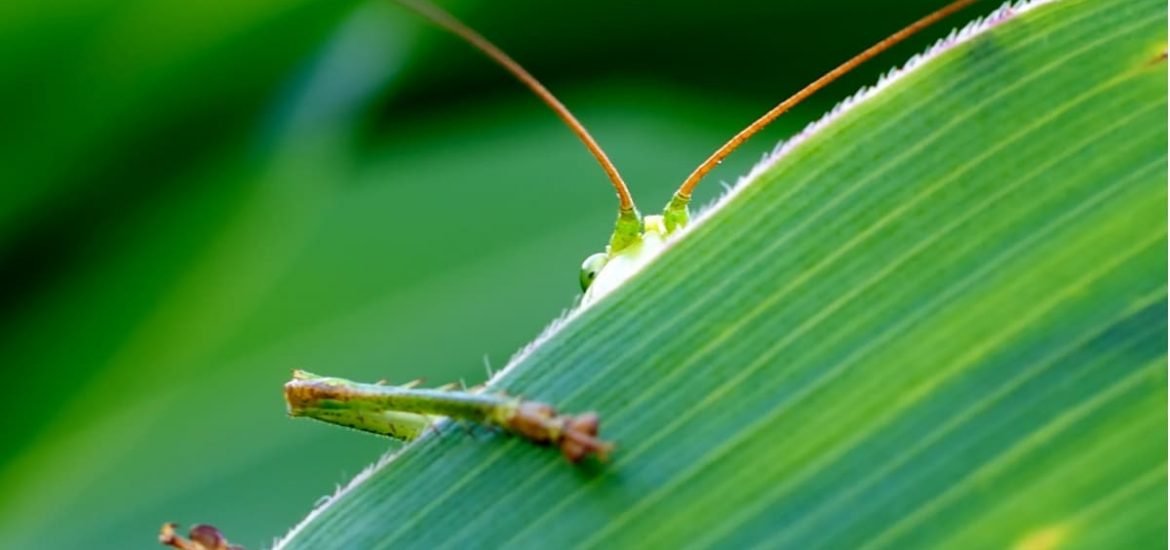
A new paper slated for publication in the April edition of the journal Biological Conservation has predicted that over 40 per cent of insect species are at risk of extinction over the next few decades, mainly driven by habitat loss by conversion to intensive agriculture, in particular, the use of pesticides, as well as other chemical pollutants, invasive species, and climate change (1).
Insects are essential to all ecosystems as food sources, pollinators, and they also recycle nutrients in the soil. Threats to many animal species as well as concern surrounding the loss of biodiversity ― both of which are mainly owing to human activity ― are often in the spotlight, whereas insects are seldom considered. More recently, however, scientists have begun to sound the alarm over globally declining insect numbers.
Another recent study on several of Germany’s protected areas discovered that insect numbers declined steadily over a period of three decades. Furthermore, they found a shocking 76 per cent decline in flying insect biomass, representing a 2.8 per cent loss in insect biomass per year (2). Another recent study on Puerto Rico showed similar losses of around 2.5 per cent per annum (3).
In this latest study, Francisco Sánchez-Bayo from the University of Sydney, Australia and Kris Wyckhuys from the China Academy of Agricultural Sciences in Beijing comprehensively reviewed 73 historical reports of insect declines around the world to determine the most important drivers and potential future impacts. The analysis is the first to review all the data on
insect declines around different parts of the world side-by-side. The main factors affecting insect numbers were identified as habitat loss caused by intensive agriculture and urbanisation, pollution, including synthetic pesticides and fertilisers, and biological factors, such as pathogens and introduced species, as well as climate change.
According to the researchers, half of the existing insect species are declining at a rapid pace and one third are at risk of extinction. Furthermore, they point out that intensification of agriculture over the past six decades is the “root cause of the problem.” In particular, pollution due to the widespread use of synthetic pesticides and fertilisers is leading to this significant habitat loss. Moreover, the introduction of new classes of synthetic insecticides over the last 20 years is thought to have been particularly damaging.
Most of the studies analysed were in relation to Europe and North America, as well as a few other developed countries. However, these trends are likely to be occurring all over the world, particularly in developing nations where similar agricultural practices are being used more frequently and agricultural intensification is now widespread.
The authors solemnly conclude that “unless we change our ways of producing food, insects as a whole will go down the path of extinction in a few decades.” Adding that “the repercussions this will have for the planet’s ecosystems are catastrophic to say the least.” Therefore, new approaches to agricultural practices are urgently needed, including more sustainable alternatives to pesticides and other more ecologically-based practices.
The study, along with other recent studies, is further evidence that wildlife numbers are being dramatically affected by human action. The sixth major mass extinction event is, indeed, imminent (4). But identifying the likely drivers of insect losses could at least help guide appropriate conservation strategies to mitigate or even reverse previous declines ― and importantly, to “safeguard the vital ecosystem services they provide.”
(1) Sánchez-Bayoa, F. and Wyckhuys, K.A.G. Worldwide decline of the entomofauna: A review of its drivers. Biological Conservation (2019). DOI: 10.1016/j.biocon.2019.01.020
(2) Hallmann, C.A. et al. More than 75 percent decline over 27 years in total flying insect biomass in protected areas. PLoS One (2017). DOI: 10.1371/journal.pone.0185809
(3) Lister, B.C. and Garcia, A. Climate-driven declines in arthropod abundance restructure
a rainforest food web. Proceedings of the National Academy of Sciences (2018). DOI: 10.1073/pnas
(4) Ceballos, G., Ehrlich, P.R., and Dirzo R. Biological annihilation via the ongoing sixth mass extinction signaled by vertebrate population losses and declines. Proceedings of the National Academy of Sciences (2017). DOI: 10.1073/pnas.1704949114